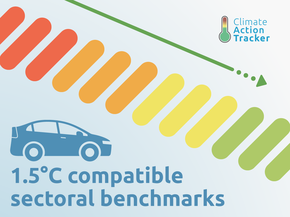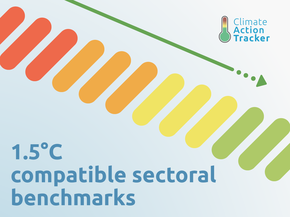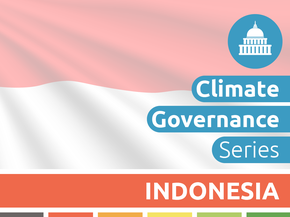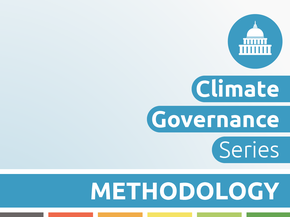Assumptions
Rating text
NOTE: We have not updated our quantitative assessment of Indonesia’s current policy projections and targets. The new government is currently developing key policies, plans, and targets, including the National Energy Policy (KEN), National Energy General Plan (RUEN), National Electricity Master Plan (RUKN), Electricity Supply Business Plan (RUPTL), and the Second NDC. The CAT will update its quantitative analysis in 2025 once these documents are published. This update focuses on a qualitative assessment of recent climate policy developments in Indonesia.
Historical emissions
Historical data until 2022 for all sectors apart from LULUCF are taken from the PRIMAP-hist dataset (Gütschow and Pflüger, 2023). A full series of LULUCF emissions is constructed by combining data from Indonesia’s Third Biennial Update Report (BUR3) for 2000-2019 and data reported to the UNFCCC GHG inventory database for 1990-1999 (Republic of Indonesia, 2021a).
NDC and other targets
To quantify the 2030 NDC target we use the BAU and the sectoral distribution from Indonesia’s NDC document – taken at face value and without harmonisation to historical data (Republic of Indonesia, 2016). We consider that NDC targets are presented in SAR GWP. Therefore, we convert the values to AR4 GWP assuming that the 10-year historical ratio between emissions in SAR and AR4 remains stable up to 2030.
The CAT takes the absolute emissions level excluding LULUCF by 2030 given in the official documents for the unconditional targets.
The NDC does not provide an absolute emissions level for the 2020 target. To quantify the 2020 pledge, the CAT assumes the sectoral contribution to emissions reduction from Indonesia’s BUR2, which implicitly assumes that the 2020 pledge and the NDC targets are based on the same BAU. The BUR2 shows that the LULUCF sector is responsible for around 80% of the emissions reduction in 2020.
Net-zero targets and other long-term targets
The Indonesian government assumes a LULUCF sink of 299 MtCO2e in the Low Carbon Compatible with Paris Agreement (LCCP) scenario presented in the LTS submitted to the UNFCCC (Government of Indonesia, 2021). We keep this value constant for 2060 and assumed a linear decline in total GHGs between 2030 and 2060 to balance LULUCF emissions in 2060.
Current policy projections
We construct current policy projections by combining a APERC and PLN projections for the power sector, with our own projections of energy non-CO2 and non-energy emissions. Emissions from the huge pipeline of captive coal plants are largely missing from APERC, IEA, and PLN projections (on-grid). We quantify emissions from these power plants using Global Coal Plant Tracker data on operation start date, lifetime, capacity, and assume default capacity and emissions factors (Global Energy Monitor, 2023).
For energy-CO2 we combine the reference “Business-as-usual” scenario from the Asia Pacific Energy Research Centre (APERC), which "assumes current policies and trends continue" (APEC, 2022) and Indonesia’s 10-year electricity supply plan RUPTL 2021–2030 (Republic of Indonesia, 2021b). We use coal, oil, and gas emission factors from the IEA’s Current Policies Scenario for Southeast Asia to estimate emissions from planned generation.
We add these energy-CO2 projections to energy non-CO2 and non-energy emissions projections to obtain current policies projections for total emissions excl. LULUCF. For each sector we create a projection based on the growth rates forecast in Indonesia’s Second Biennial Update Report (Republic of Indonesia, 2018a). We develop a range by looking at other possible sector-specific trends. For industry we apply GDP growth rates from our post-COVID GDP series, which includes forecasts from the IMF, World Bank, ADB, and OECD (ADB, 2023; IMF, 2023; OECD, 2023; World Bank, 2023). For agriculture, waste, and other sectors, we apply a five-year trend. The two alternatives create a minimum and maximum current policies projections for energy non-CO2 and non-energy emissions.
We subsequently harmonise these projections to historical data. The emissions levels are sensitive to the method of harmonisation. Thus, we apply two methods:
- Apply growth rates of the calculated scenarios to the last historical year (2022);
- Adjust all future years by the difference of the calculated scenario and the inventory in the last available year (2022).
Both methods are included in the range presented for current policy projections.
Planned policy projections
We estimate the emissions resulting from full implementation of the JETP pathway presented in the Comprehensive Investment and Policy Plan (CIPP), published in November 2023 (JETP Secretariat, 2023). The CIPP provides a table of on-grid power emissions in five-year intervals from 2025-2050. We interpolate between the values and to the last historical data point in 2022 to obtain a full series.
Global Warming Potentials values
The CAT uses Global Warming Potential (GWP) values from the IPCC's Fourth Assessment Report (AR4) for all its figures and time series. Assessments completed prior to December 2018 (COP24) used GWP values from the Second Assessment Report (SAR).
Further analysis
Country-related publications
Stay informed
Subscribe to our newsletter






